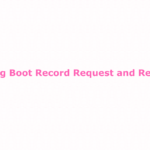Ehcache hello world example
In this tutorial, we will show you two examples to help you getting started with Ehcache. Tools used : Ehcache 2.9, Maven 3, Gradle 2, JDK 1.7 - P.S Ehcache…
Jersey + Spring integration example
This tutorial show you how to integrate Jersey web application with Spring framework. Technologies used :Jersey 1.8, Spring 3.0.5.RELEASE, Eclipse 3.6, Maven 3
RESTful Java client with Jersey client
This tutorial show you how to use Jersey client APIs to create a RESTful Java client to perform “GET” and “POST” requests to REST service that created in this “Jersey…
RESTful Java client with RESTEasy client framework
This tutorial show you how to create a RESTful Java client with RESTEasy client framework, to perform “GET” and “POST” requests to REST service that created in last “Jackson +…
RESTful Java client with Apache HttpClient
Apache HttpClient is a robust and complete solution Java library to perform HTTP operations, including RESTful service. In this tutorial, we show you how to create a RESTful Java client…
RESTful Java client with java.net.URL
In this tutorial, we show you how to create a RESTful Java client with Java build-in HTTP client library. It’s simple to use and good enough to perform basic operations…
tinylog Tutorial
This tutorial shows logging in Java application using the tinylog lightweight logging framework. The tinylog is fast; read this benchmark. The tinylog documentation is very detail and organized, make sure…
How to load logging.properties for java.util.logging
In Java Logging APIs or java.util.logging, we use system property java.util.logging.config.file to define the location of the logging.properties file. Normally, we put the logging.properties at the src/main/resources, and project compile…
logging.properties example
The Java logging APIs (java.util.logging) default loads logging.properties in the $JAVA_HOME/jre/lib/ (Java 8 and before); for Java 9 and above, the logging.properties file moved to $JAVA_HOME/conf.
Jersey and HK2 dependency injection (auto scanning)
This article shows how to use HK2 dependency injection framework in Jersey and enable auto-scanning auto-discovery of the declared @Contract and @Service components. Jersey, by default, uses HK2 (Hundred-Kilobyte Kernel)…






